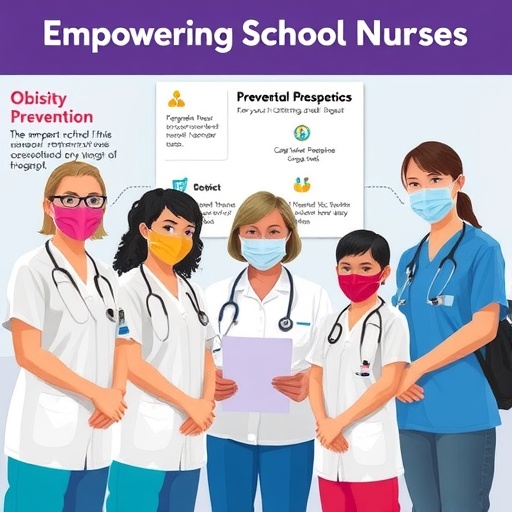New Guidelines Offer Critical Insights into Pediatric Tracheostomy Care, Aiming to Revolutionize Outcomes for Young Patients
The decision to place a tracheostomy tube in a child presents an emotionally complex and medically challenging dilemma for families and healthcare providers alike. Highlighting this critical juncture in pediatric care, the American Thoracic Society (ATS) has released its first-ever comprehensive clinical practice guideline specifically addressing the management of infants and children with tracheostomies. Published October 22, 2025, in the American Journal of Respiratory and Critical Care Medicine, this landmark guideline aims to blend rigorous scientific methodology with patient-family-centered care principles, charting a new course in tracheostomy management.
Tracheostomy—a surgical procedure involving the insertion of a tube through an incision in the neck directly into the trachea—is often lifesaving for pediatric patients with compromised airways or respiratory failure. This intervention facilitates breathing and provides a secure airway access point for prolonged ventilation support—but it is not without its risks and challenges. Dr. Christopher Baker, director of the Ventilator Care Program at Children’s Hospital Colorado and co-chair of the guideline panel, underscores the nuanced reality: “A tracheostomy can save, lengthen, and improve quality of life, but it may also contribute to complications or increased suffering if not judiciously applied.”
The ATS guideline represents a meticulous synthesis of evidence using the GRADE framework, a recognized approach for weighing the quality and certainty of medical evidence to formulate clinical recommendations. Notably, the development panel was uniquely composed of multidisciplinary healthcare experts alongside caregivers, ensuring that the often-unheard perspective of families managing tracheostomies at home was integral to the guidance. This inclusion reflects a growing recognition in medical communities that family experience and expertise are vital components in managing chronic pediatric conditions.
Beyond the technical aspects of surgery and care, the guideline prioritizes ethical considerations as a foundational element in clinical decision-making. Recommendation 1 strongly endorses the application of ethical principles—beneficence, nonmaleficence, autonomy, and justice—in deliberations regarding tracheostomy placement. This ethical framework mandates that decisions weigh not only clinical factors but also the values, preferences, and goals of patients and their families, fostering shared decision-making paradigms between providers and caregivers.
Equally critical to patient safety, the guideline emphasizes the necessity for vigilant in-home monitoring by trained caregivers. Given that tracheostomy-related complications can precipitate rapid decompensation, the guideline’s Recommendation 3 mandates that a knowledgeable caregiver remain awake and alert during vulnerable periods. This protocol is essential for early recognition of life-threatening events such as tube obstruction or dislodgment, which require immediate intervention to prevent morbidity or mortality.
The guidelines also delve into the technical complexities surrounding decannulation—the removal of the tracheostomy tube once it is no longer medically necessary. Recommendation 5b provides a well-defined protocol for a comprehensive airway evaluation prior to attempting decannulation. This evaluation spans anatomic regions from the nasal passages and nasopharynx through the oropharynx, supraglottis, larynx, subglottis, trachea, and bronchi, ensuring that potential obstructions or anomalies are identified and addressed to promote safe weaning.
This updated ATS guidance marks a significant evolution from the Society’s 1999 official statement on chronic pediatric tracheostomy care. Unlike the earlier document, the new clinical practice guideline adheres to stringent scientific methodology, providing evidence-graded recommendations designed to standardize care delivery and improve outcome consistency across diverse clinical settings. The introduction of such rigor is expected to elevate the standard of tracheostomy care globally.
Despite the broad aspirations of the guideline, the authors acknowledge potential implementation challenges, particularly in resource-limited environments such as rural areas and low-to-middle-income countries. Dr. Baker notes ongoing research efforts aimed at adapting and validating guideline recommendations within these contexts, recognizing the disparities in healthcare infrastructure and workforce expertise that may impact feasibility.
At its core, the guideline embodies a paradigm shift toward family-centered pediatric respiratory care. Crystal Costante, a parent of a ventilator-dependent child with a tracheostomy who participated in the guideline’s development, recounts the empowerment that the guidance provides to families. The explicit inclusion of caregivers in the formal care team nurtures trust and communication, while also valuing parental knowledge and experience as essential to achieving optimal safety and quality of life for children.
Clinically, the document acts as an indispensable resource for a spectrum of professionals including pediatric pulmonologists, critical care physicians, otolaryngologists, rehabilitation specialists, and home health providers. By harmonizing diverse expert opinions through a standardized evidence-based approach, the guideline supports cohesive multidisciplinary collaboration essential for managing complex pediatric airway disorders.
The ATS’s commitment to producing over 30 clinical practice guidelines in recent years reflects a broader dedication to advancing respiratory medicine through science-driven practice. Parallel efforts to develop implementation tools and educational resources further enhance the impact and accessibility of these guidelines, facilitating translation from theory into everyday clinical excellence.
In summary, the ATS’s new clinical practice guideline on pediatric tracheostomy care offers an expertly crafted roadmap for clinicians and families confronting some of the most challenging decisions in pediatric respiratory medicine. Through an integrated approach combining ethical principles, rigorous evidence evaluation, and family partnership, this guidance has the potential to transform care delivery and profoundly improve health outcomes for vulnerable children worldwide.
Subject of Research: Pediatric Tracheostomy Care and Clinical Practice Guidelines
Article Title: Care of Infants and Children with Tracheostomies: An Official American Thoracic Society Clinical Practice Guideline
News Publication Date: October 22, 2025
Web References:
American Thoracic Society: https://site.thoracic.org
Clinical Practice Guideline Full Text: https://www.atsjournals.org/doi/full/10.1164/rccm.202508-2055ST
American Journal of Respiratory and Critical Care Medicine: https://www.atsjournals.org/journal/ajrccm
Image Credits: American Thoracic Society (ATS)
Keywords: Respiratory disorders, Pediatrics, Tracheostomy, Pediatric pulmonology, Clinical practice guideline, Ethical decision-making, Shared decision-making, Pediatric critical care, Airway management, Ventilator care
Tags: airway management in pediatric patientsAmerican Thoracic Society guidelinesbreathing tubes in childrencritical care medicine for childrenfamily-centered care in pediatricsimproving outcomes for tracheostomy patientspediatric healthcare decision-makingpediatric respiratory care guidelinespediatric tracheostomy managementsurgical interventions for respiratory failuretracheostomy complications in infantsventilator support for children





